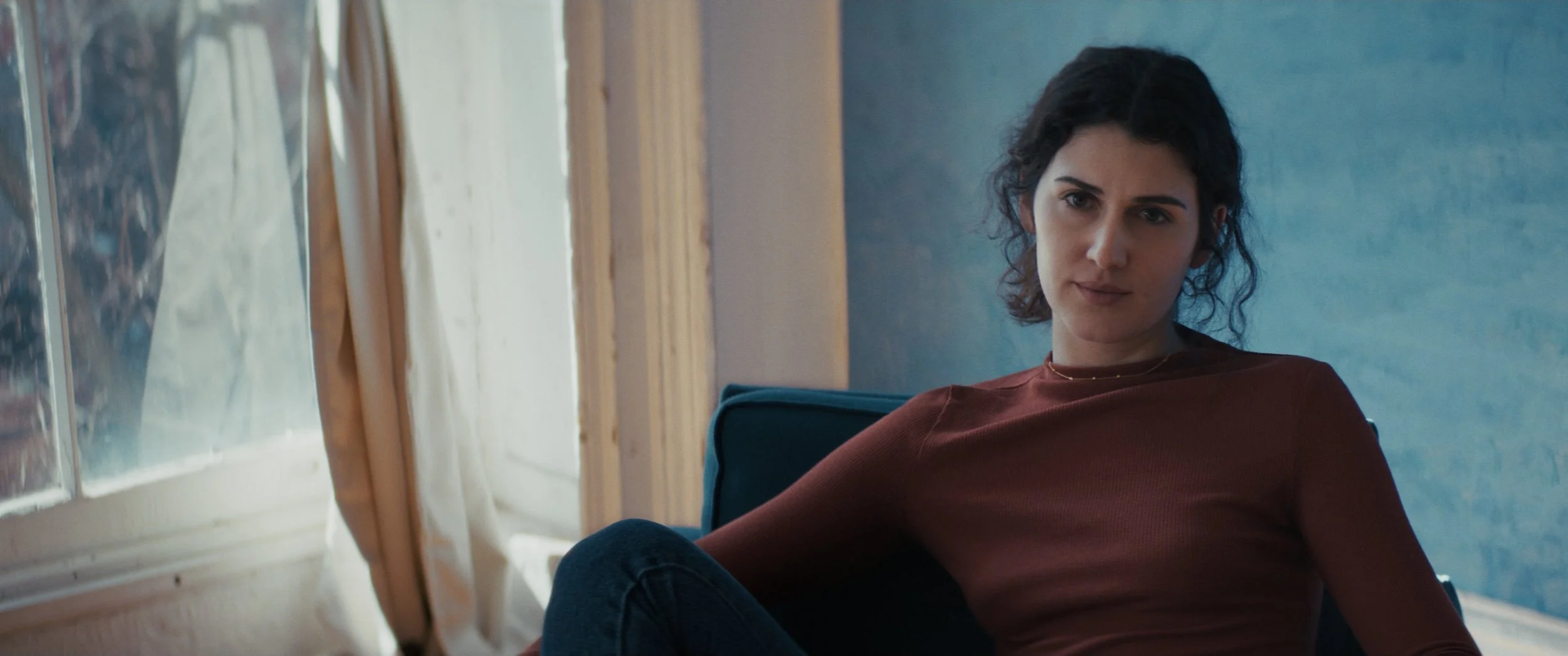Edinburgh International Film Festival: “In Transit” Probes the Power of a Look
When someone experiences art, their mind often wanders to the artist’s creative process. What led the artist to make this piece? What was the inspiration? The process? The answers to those questions can be as interesting as the final work itself. It’s the complex, ineffable nature of creativity that’s at the heart of Jaclyn Bethany’s In Transit. Written by Alex Sarrigeorgiou, In Transit recently had its world premiere at the 2025 Edinburgh International Film Festival. The film is a quiet piece of work dedicated to the way the process of making art changes everyone it touches. From the artist to the muse to the subject to the viewer, all of these people become irrevocably changed by art’s existence.
courtesy of In Transit
Life in Maine changes with the seasons. Not only in terms of temperature, but in a grander sense. In Transit takes place in one of those small coastal towns that lives and dies by the summer tourist crowds. In the wintertime, half the town closes down, waiting until the early spring months for the tourist dollars to thaw out their businesses. Lucy (Sarrigeorgiou) works in one of the few businesses that stays open year-round. It’s the local watering hole that her deceased father helped open years ago with his still-living business partner (Theodore Bouloukos). Lucy’s days are monotonous, but steady. She works the bar, helps the regulars with their crossword puzzles, and goes home to her boyfriend, Tom (François Arnaud). This routine is upended by the arrival of a painter, Ilse (Jennifer Ehle), who is artistically lost and sees Lucy as the perfect muse to get her out of her funk.
In 2019, Celine Sciamma’s Portrait of a Lady on Fire premiered at the Cannes Film Festival. It was a fundamental deconstruction of the relationship between artist and muse. One that In Transit follows up on in a more indie-film-spirit way. Despite Portrait’s small cast of characters, there was a grandness to it, an epic scale that doesn’t exist in In Transit. There is a similar feeling of isolation in both films that adds to the intoxication that blooms from the act of creation. It’s thrilling to feel part of something. To be making something out of nothing with another human being. In the case of In Transit, it’s Lucy and Ilse spending hours on a painting that Lucy’s not sure anyone else will ever see. Of course, it’s difficult to reckon with the end product when one learns their collaborator had an entirely different experience in its creation.
courtesy of In Transit
“I am looking at you and I am muddied by expectations of my work and myself,” Ilse tells Lucy at one point in the film. Earlier, they had talked about an older artist whose work all fell under the uniting theme of the artist wanting to be seen. It’s a human problem – the desire to be noticed and viewed in a way that’s truthful. But that’s the problem. Even with the purest of intentions, we’re still looking at everyone around us in a way that serves us rather than them. In Transit captures creation and its aftermath. The thorniness of sharing something with someone who doesn’t see it the same way. How do we reconcile the two realities of life experiences imparting perception? Where does that leave those involved?
In Transit is about the power of looking and noticing, and the effect that has on people. Every look holds a weight of its own, clouded by the baggage we carry around. In Transit captures the loneliness of creation as it mixes with the hope that an act means more than it does.
support your local film critic!
~
support your local film critic! ~
Beyond the Cinerama Dome is run by one perpetually tired film critic
and her anxious emotional support chihuahua named Frankie.
Your kind donation means Frankie doesn’t need to get a job…yet.
Follow me on BlueSky, Instagram, Letterboxd, YouTube, & Facebook. Check out Movies with My Dad, a new podcast recorded on the car ride home from the movies.


